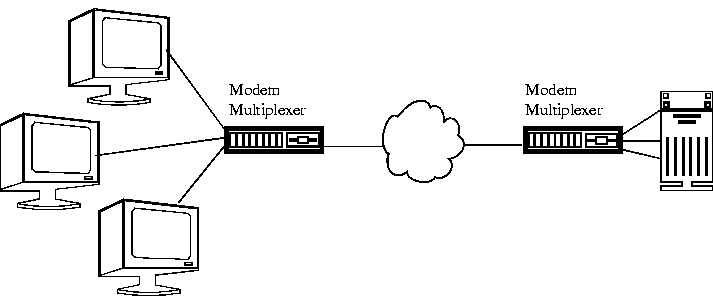| Introduction to Data Communications | ||
|---|---|---|
|
|
30. Multiplexing (cont'd) | Next |
The operation of multiplexers (abbreviated MUXs) is transparent to the sending and receiving computers or terminals. Transparent means that as far as everyone is concerned, they appear to be directly connected to the mainframe with individual wires. The multiplexer does not interfere with the normal flow of data and it can allow a significant reduction in the overall cost of connecting to remote sites, through the reduced cost of cable and telephone line charges.
Multiplexers are used to connect terminals located throughout a building to a central mainframe. They are also used to connect terminals located at remote locations to a central mainframe through the phone lines.

There are 3 basic techniques used for multiplexing:
| Introduction to Data Communications | ||
|---|---|---|
|
|
Table of Contents | Next |